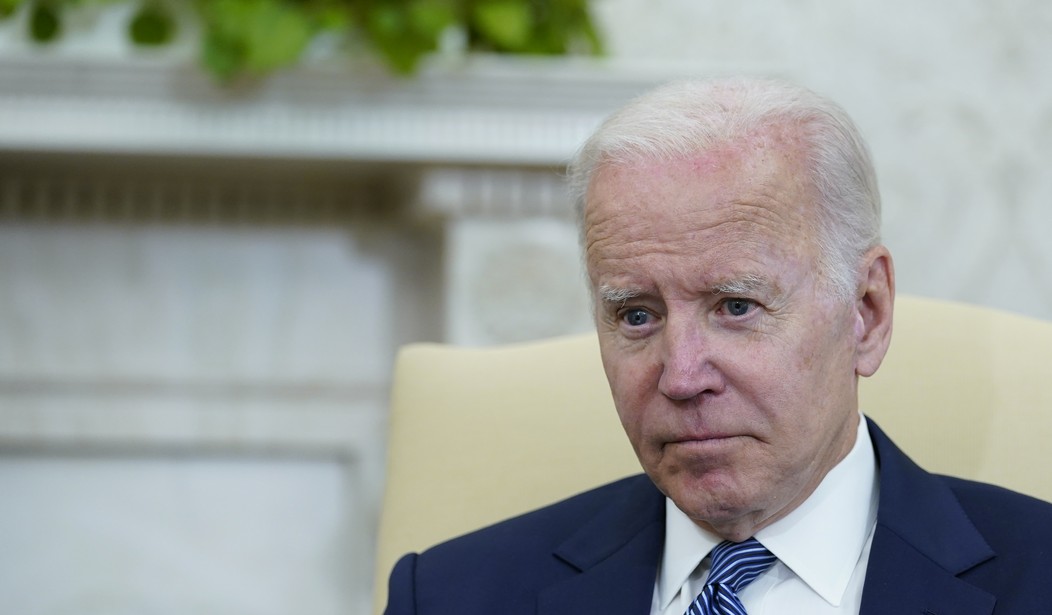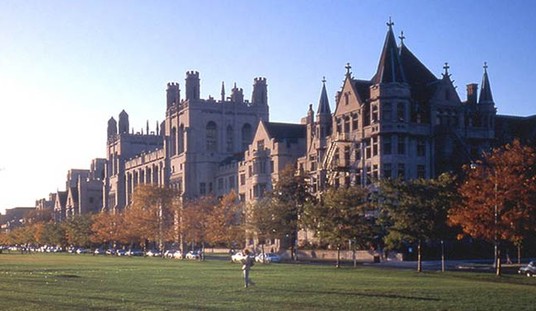Old and busted: “Misery Index.” New hotness: “Suffering Index.”
Actually, the two parallel each other using different and important measures. The Misery Index combines CPI inflation and the prevailing interest rate. Gallup’s “suffering index” — they call it the Life Evaluation Index — measures how Americans feel about the present conditions, economic and otherwise.
And brother, they’re not happy about it at the moment. In fact, we feel far worse than we did during the pandemic, according to Gallup:
The percentage of Americans who evaluate their lives poorly enough to be considered “suffering” on Gallup’s Life Evaluation Index was 5.6% in July, the highest since the index’s inception in 2008. This exceeds the previous high of 4.8% measured in April and is statistically higher than all prior estimates in the COVID-19 era. Across extensive measurement since January 2008, the suffering percentage has reached 4.5% or higher on a handful of occasions.
The most recent results, obtained July 26 to Aug. 2, 2022, are based on web surveys of 3,649 U.S. adults as a part of the Gallup Panel, a probability-based, non-opt-in panel of about 115,000 adults across all 50 states and the District of Columbia.
Those trends drive the right/wrong direction polls, as well as Gallup’s “suffering index.” The former usually tend toward the negative, but not usually at anywhere near the amplitude of the current RCP aggregate average, 22.9/70.9. The amplitude of the “Suffering Index” at Gallup is eye-popping as well:

That is almost a full point above the “suffering index” in 2008, in the midst of the Great Recession. It far exceeds the self-identified “suffering” in the economic meltdown in the first year of the pandemic. And while it’s not evident in this Gallup-produced embeddable graphic, the chart at Gallup notes that the “suffering index” in February 2021 — just after Biden took office — was 3.9%. As the chart shows, this is the steepest ascent of this measure in the history of the Gallup survey.
This not only measures the present, but also respondents’ views of their future. Right now, both look pretty bleak for a significant percentage of the populace:
For its Life Evaluation Index, Gallup classifies Americans as “thriving,” “struggling” or “suffering,” according to how they rate their current and future lives on a ladder scale with steps numbered from 0 to 10, based on the Cantril Self-Anchoring Striving Scale. Those who rate both their current and future lives a 4 or lower are classified as suffering. Those who rate their current life a 7 or higher and their anticipated life in five years an 8 or higher are classified as thriving.
At the same time, thrivers remain in the majority, suggesting that the have-have-not split may be widening under Bidenomics. Thrivers dropped to an 18-month low, however:
The percentage of U.S. adults estimated to be thriving has steadily declined since it reached a record high of 59.2% in June 2021. The latest estimate of 51.2% is an 18-month low. The lowest recorded thriving rate of 46.4% was measured twice — first, in November 2008 amid the Great Recession, and second, in late April 2020, during the initial economic shutdown associated with the outbreak of COVID-19 in the U.S.
There are still enough of them to produce this strange economic outcome:
Another sign of the revival in US demand in 2021 and stronger purchasing power (vs EU) in the revival and record wine imports. Would imagine that ceasing of tariffs on European wine imports early in 2021 after the truce over Boeing-Airbus also helped https://t.co/rAGyUAIbJw
— Rachel Ziemba (@reziemba) August 22, 2022
Bear in mind that real disposable personal income has shrunk for five quarters in a row — and that the RDPI measure is comparative, which means it compounds. For most households, their buying power has shrunk steadily over almost all of the Biden presidency and is still getting worse. Does this look like an environment in which luxuries like imported wine would be broadly accessible?

To that point, the discount retailers have been reporting for the last few months that their consumers are feeling the need to downscale — even at Walmart and Target. Their shoppers aren’t buying French wines these days, not even on sale:
Companies, meanwhile, say consumers are continuing to spend, although they remain mindful about rising prices. Walmart Inc. reported Tuesday that higher prices have led shoppers to hold back on some purchases, giving priority to lower-margin food items. Best Buy Co. last week said it is cutting jobs to lower costs, due in part to consumers shifting spending as a result of high levels of inflation.
Target Corp. said Wednesday its profit last quarter fell further than the retailer anticipated as it worked to unload excess inventory. The company cited a swift reversal of buying behavior, with shoppers cutting spending on discretionary items as inflation pressured their spending and product shipments arrived late.
“They still have spending power, but they’re increasingly feeling the impact of inflation,” Target executive Christina Hennington told analysts. “While the recent reduction in prices at the gas pump have been encouraging, guest confidence in their personal finances continues to wane.”
The conclusion this suggests is that income inequality is rapidly expanding in Bidenomics, as evidenced by both direct data and public polling. The working and middle classes are downscaling, while the upper classes are importing luxuries.
Again, all of this is bad enough for Americans on its own. Consider, however, what this kind of environment means in an election cycle, and then ask yourselves whether pollsters are cognizant enough of this context to properly model what this environment will produce in November.








Join the conversation as a VIP Member